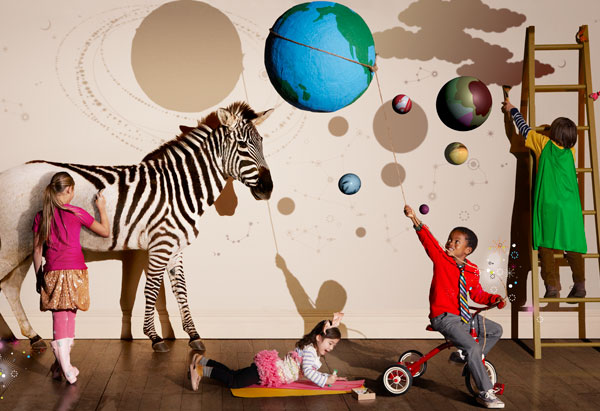This week’s topic made me revisit some of my convictions about teaching and learning, bringing these essential questions back into my mind: How do teaching and learning affect each other? Is the relation between teaching and learning unilateral or bilateral or completely separate? Are these processes simultaneous or sequential? Or do they have a temporal pattern at all? How does the form of teaching inform the content of learning? I see that my answers to these questions would significantly differ from my experience as an undergraduate student than my experience as a teacher. The former me would have fundamentally different answers than the latter. Observing the extent and the depth of this gap, I came to appreciate the power of Paulo Freire’s approach to pedagogy, which inspired me to review what I knew about the epistemology of teaching and to start shaping my teaching philosophy. For me, Freire draws a road map to becoming an influential educator by inciting curiosity and by providing a variety of information that will guide the students to find who they are and what they want to do with their life. My take away from this week’s readings is that both the teacher and the students embark on a journey together in which they learn from, they are inspired by, and act in solidarity with each other as they create an environment, which embraced the joy of learning, promotes braveness, and builds trust.

I believe, referring to educators as “learned scholars, community researchers, moral agents, philosophers, cultural workers, and political insurgents”[1] in the Freirean sense highlights an important aspect of the role and the position of the educator (70). According to Freire, teachers should focus on multifaceted critiques of dominant power in designing their curriculum, which encompasses curricular and instructional strategies. The actions informed as such should aim at creating a better learning environment, as well as at establishing a better society. Thus, for Freire, individual empowerment, which incites social change, cannot be thought apart from the learning process.
I am not sure whether Freire’s framework would be appealing for all educators, but his observation on the way in which the educational institutions can be both impediments or chances to fight oppression. His entire work and education philosophy has been focused on mapping the strategies, which he referred as “liberatory action” [2] and which enable students to intervene in dehumanizing processes within institutions. In that sense, his approach has emphasized a process-based model of teaching in which students is empowered to think free from the dominance of the previous knowledge and to imagine their future free from the imposed norms and standards of the society through the development of their conscious.
What makes Freire approach distinct from the conventional teaching approaches is the way in which he problematized teacher’s authority. While he underlines the necessity of a type of authority that “respects the being and experiences of students”[3], he strongly opposes an authoritarian pedagogy, which operates by making “deposits of information in student mind banks”[4] and by making the student demonstrate learned information, as s/he is asked to “give it back to the teacher in the same form it was provided to” her/him. Freire conceptualizes the way of learning based on such relationship as “banking pedagogy.”[5] The students are considered as “”containers,” into “receptacles” to be “filled””[6] by the narrated account of the teacher.
Freire argues that the one-way structure of the relationship between students as “the depositories”[7] and educator as “depositor,” does not only produces a misguided system but also tear off humanity out of students. In breaking the cycle of reproducing the same knowledge in the same form, he offers an alternative method, which he called problem-posing education. Freire juxtaposes both approaches regarding the roles and positions of the student and the teacher/educator in detail. I found that among three of them had answers to my questions. First, this approach removes the hierarchal positioning between the teacher and the student in banking pedagogy and brings them to the same level where they create the knowledge together. It also embraces the student’s effort to develop consciousness and attempts for critical intervention in actual conditions. Finally, in problem-posing education, “people develop their power to perceive critically the way they exist in the world with which and in which they find themselves.” Within this process the lines that divide the roles of educator and students blur, leading both of them to reflect simultaneously on themselves.

Going back to my questions, I see that Freire’s thought would answer most of my questions:
To learn, then, logically precedes to teach. In other words, to teach is part of the very fabric of learning. This is true to such an extent that I do not hesitate to say that there is no valid teaching from which there does not emerge something learned and through which the learner does not become capable of recreating and remaking what has been thought. In essence, teaching that does not emerge from the experience of learning cannot be learned by anyone[8].
I argue that Freire would address the relation between teaching and learning as a bilateral unfinished process in which both of these actions take place both simultaneously and sequentially, claiming that particular instances of learning may happen independently. According to Freire, the form should not dictate the content in the process of learning and teaching, since” the process of learning, through which historically we have discovered that teaching is a task not only inherent to the learning process but is also characterized by it.” Although I am not sure whether I can commit to such a passionate and ambitious agenda of teaching, I came to realize that Freire’s contributions to philosophy and epistemology of pedagogy and his courage to seek ways to deal with the actuality without referring the suppression of past. Most important of all, I am thankful for bringing a new perspective, which challenges the monopolization of knowledge not only by individual actors but also certain forms of teaching that are capable of transcending our humanity, paving the way for dehumanization practices.
[1] Kinchloe Joe L., “Paulo Freire (1921-1997)” in The Critical Pedagogy Primer, 2004, 70.
[2] Ibid.
[3] Kinchloe Joe L., “Paulo Freire (1921-1997),” The Critical Pedagogy Primer, 2004, 74.
[4] Ibid.
[5] Ibid.
[6] Freire, Paulo, “The Banking Concept of Education,” Pedagogy of the Oppressed, 1993, 71.
[7] Ibid.
[8] Freire, Paulo, “There is No Teaching Without Learning, ”Pedagogy of Freedom, 2001, 31





